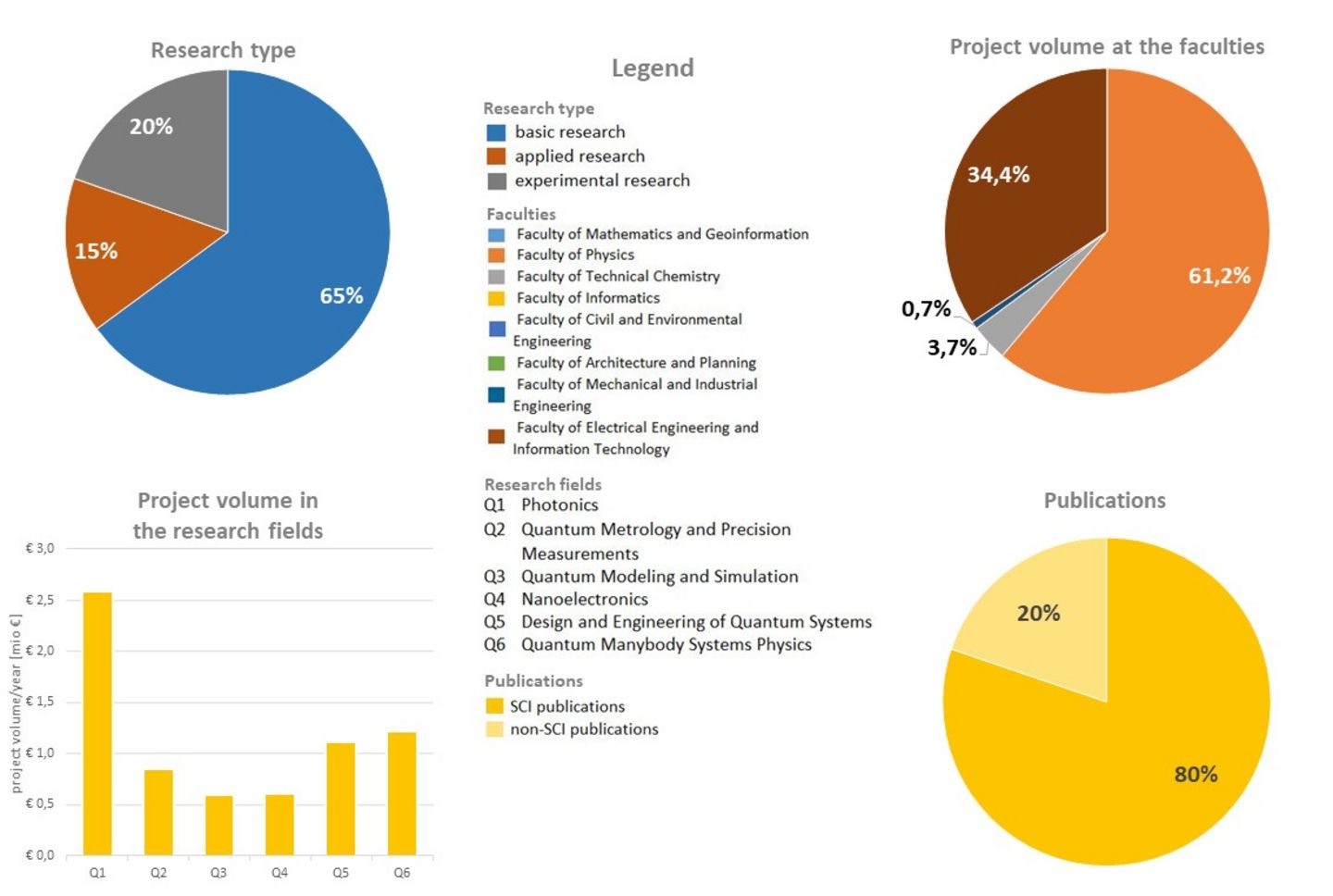Quantum Physics and Quantum Technologies
Regarded as exotic basic research just decades ago, it now shapes the technology we use on a daily basis. Quantum effects are harnessed at TU Wien. If you think that the research focal area of Quantum Physics & Quantum Technologies is only of relevance to the Faculty of Physics, you would be very wrong – quantum effects play just as much a central role in fields such as electrical engineering or chemistry as they do in physics.
Making use of the quantum world in technology
We often do not realise how deeply quantum technology is rooted in our everyday lives. Microchips control our electronic devices, laser beams are used for information transfer and high-tech sensors make our lives safer. Modern electrical engineering uses many aspects of quantum theory. Micro-electronic components are developed with knowledge from quantum research. Novel light sources are produced at TU Wien, such as special lasers in the terahertz range that previously were barely technically achievable, and quantum cascade lasers that can be used for versatile sensor systems. Ultra-short laser pulses open up brand new possibilities for investigation of the world of atoms and molecules. Established quantum research is also now essential for chemistry. In the field of materials chemistry, in particular, quantum physics and chemistry often merge seamlessly into one another.
From basic principles to quantum technology
With spectacular scientific successes in the field of quantum research, TU Wien continues to attract international attention. Atom chips enable deeper insights into atomic physics. A better understanding of quantum interference and quantum decoherence opens the door to possible new applications: perhaps quantum information technology and quantum computers will one day be just as common as microchips and lasers. Without a solid theoretical basis, further development of quantum technology is not possible. In theoretical and numerical quantum research, the achievements of TU Wien extend from computer analysis of experimental results, through large quantum theoretical computer simulations that have long been essential for solid state physics, to the most fundamental and abstract questions that modern science has to offer – questions, for example, from the fields of quantum field theory, string theory and quantum gravity.
While it might sound almost utopian, quantum physics actually helps us to understand aspects of day-to-day life, such as the chemical or physical properties of different materials.
- Photonics
- Quantum Metrology and Precision Measurements
- Quantum Modeling and Simulation
- Nanoelectronics
- Design and Engineering of Quantum Systems
- Quantum Many-body Systems Physics
The research focal area of Quantum Physics & Quantum Technologies is highly successful from an academic perspective – this can be seen not only in the number of publications (around 240 per year), but also in important awards, such as ERC grants or START grants awarded by the Austrian Science Fund (FWF).
There are mainly two faculties at TU Wien which are active in this research focal area – Physics, and Electrical Engineering and Information, around 30 research groups. The third-party funding obtained in 2019-2021 for research projects in Quantum Physics and Quantum Technologies is approximately 6.7 million euros per year (around 60 projects per year in basic and applied research).
The TU Wien Center for Micro and Nanostructures (CMNS), opens an external URL in a new window – an ultra-modern facility for the manufacture of semi-conductor structures through to the creation of components – is also of great importance in this field.

In the research focal area Quantum Physics and Quantum Technologies, 65% basic research, 15% applied research and 20% experimental development is carried out.
The project volume is divided among the faculties as follows: 61.2% Physics, 3.7% Technical Chemistry, 0.7% Mechanical and Industrial Engineering, and 34.4% Electrical Engineering and Information Technology.
The project volume in the individual research fields can be represented as follows: EUR 2.6 million in the research field Photonics, EUR 0.8 million in the research field Quantum Metrology and Precision Measurements, EUR 0.6 million in the research field Quantum Modeling and Simulation, EUR 0.6 million in the research field Nanoelectronics, EUR 1.1 million in the research field Design and Engineering of Quantum Systems, and EUR 1.2 million in the research field Quantum Many-body Systems Physics.
The publications are divided into 80% SCI publications and 20% non-SCI publications.
- Atomic and Subatomic Physics
- Institute of Photonics
- Institute of Theoretical Physics
- Institute of Solid State Physics
- Institute of Solid State Electronics
- Institute for Microelectronics
The selection relates to the size of the project volume in the specified period, as well as the proportion of the project volume in the key area of research, the institute project volume, and the proportion of publications.
All data and information provided relates to the research period 2019-2021 (based on the period of the Performance Agreement).
